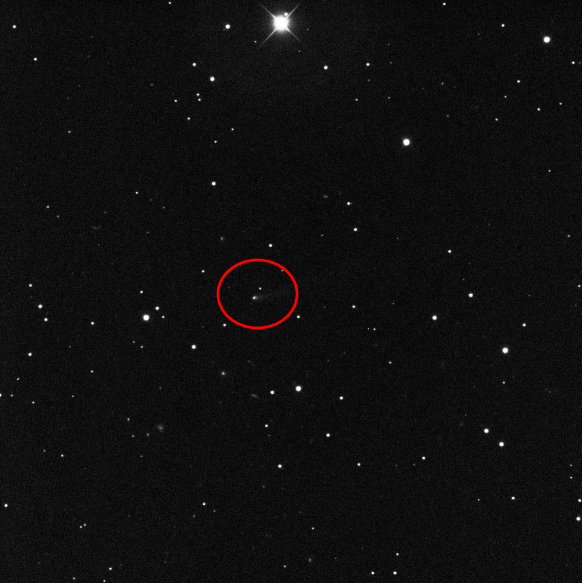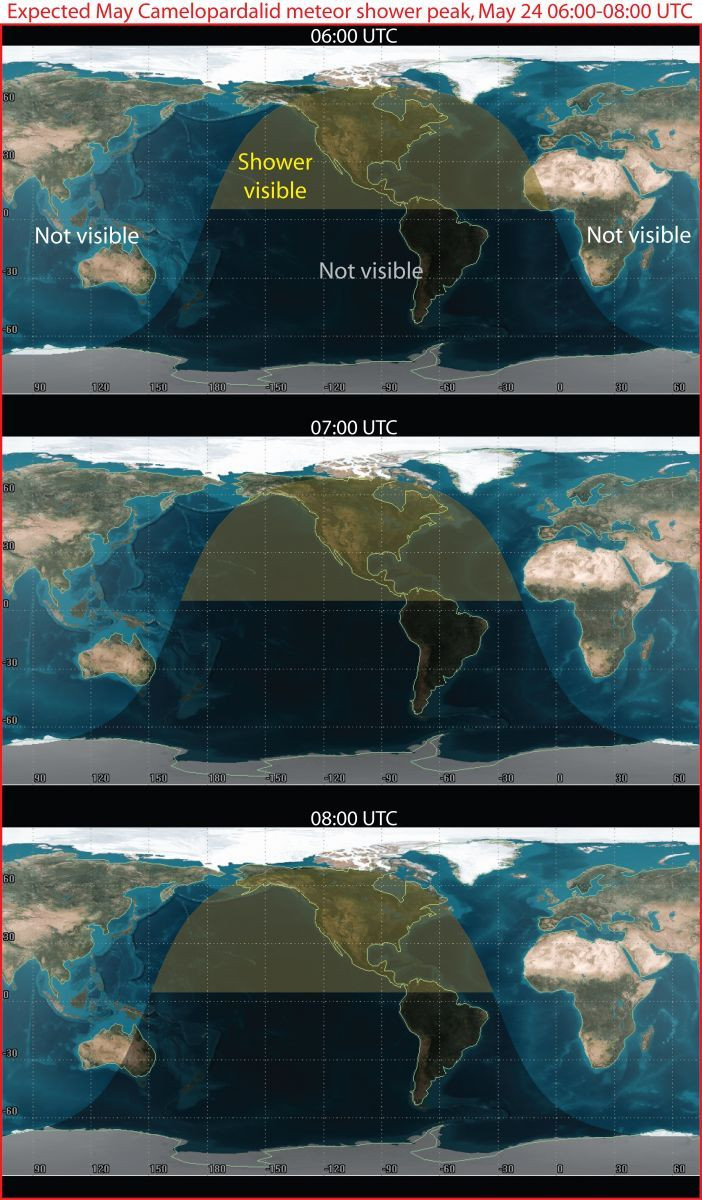May Camelopardalids Live Stream: Where To Watch, How To View May's New Meteor Shower [VIDEO]

Stargazers should grab a good friend and find somewhere dark with plenty of open sky this weekend for a chance to see the May Camelopardalids, brillant shooting stars that could even outshine last year's impressive Perseid shower. The new meteors are from a recently discovered comet that is expected to be visible from Earth for the first, and possibly, last time. What could be a spectacular light show can also be seen via a live stream, courtesy of NASA.
Peak brightness for the May Camelopardalids activity should begin about 10:30 p.m. EDT on Friday and peak around 2 a.m. EDT on Saturday.
Astronomers said that anywhere from 100 to 200 meteors could fall per hour toward Earth, potentially producing more shooting stars than August's Perseid meteor shower. NASA said that Earth will travel through the debris trail left behind by comet 209P/LINEAR.
The comet was observed for the first time by the Massachusetts Institute of Technology's Lincoln Near-Earth Asteroid Research Project in 2004 (LINEAR). The comet 209p/LINEAR crosses paths with Earth once every five years.
Specifically, Earth will be crossing through a debris trail left behind by the comet in the 1800s, but it will be the first time the planet encounters comet 209p/LINEAR's trail, the Los Angeles Times reported.
The reason for May's new meteor shower is the result of Jupiter's gravity pulling the comet's orbit and debris trail into Earth's path. Jupiter's gravity will also pull the trail away from Earth in 2015, which means the May Camelopardalids may be a once-in-a-lifetime opportunity.
Astronomers and stargazers alike aren't sure what to expect. It's possible that they might not see anything. Comet 209p/LINEAR is very faint and doesn't show a lot of activity.
How To View The May Camelopardalids
As with most meteor showers, the best way to see it is in the dark. For city dwellers, that means heading somewhere rural.
According to EarthSky's viewing guide, the meteors will look as if they are coming from the constellation Camelopardalis, which means giraffe. The solar system sits just below Polaris, the north star. Stargazers in Canada and the continental United States will have the best chance to see the meteor shower.

May Camelopardalids Live Stream
For those who can't escape the city, or live in an area where the May Camelopardalids can't be seen, there are several live stream options. The Virtual Telescope Project has a meteor shower live stream, beginning at 1:30 a.m. EDT and can be viewed here.
NASA and Slooh are partnering to provide a live stream, beginning at 10:30 p.m. EDT. Bill Cooke, head of NASA's Meteoroid Environment Office, will host a Web chat at the space agency's dedicated May Camelopardalids page, beginning at 11 p.m. EDT. The May Camelopardalids live stream, courtesy of Slooh, can be viewed below. Friday also marks comet 209p/LINEAR's closest approach to Earth and Slooh will live stream the event beginning at 8 p.m. and the broadcast can be viewed below.
Comet 209p/LINEAR Closest Approach To Earth
May Camelopardalids Live Stream
© Copyright IBTimes 2025. All rights reserved.






















